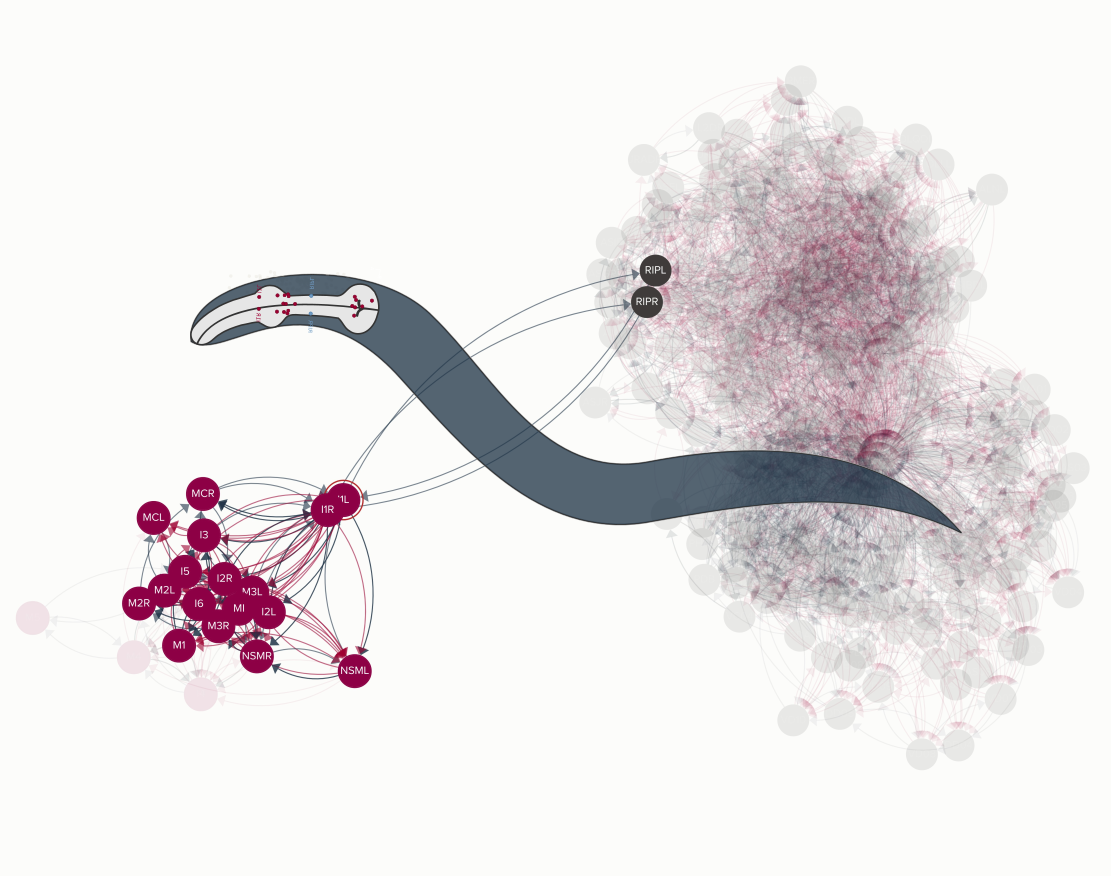Animals have access to a wealth of information coming both from their environment and from their own internal states. Filtering the necessary information from the superfluous is a key task for an animal's brain. We want to understand how nervous systems process this stream of information, compress it and ultimately use it to alter their behavior. A behavior that relies on the combination of many types of information is foraging: To efficiently seek out food the animals need to coordinate their movement and their feeding rate based on the surrounding smells, textures, and their appetite. We use the foraging behavior of the roundworm C. elegans to answer two related questions using a range of neuroscience tools:
To answer this question, we observe both locomotion and feeding behavior simultaneously. We use high-throughput behavior assays, genetic manipulation and controlled stimuli to measure how animals respond to different perturbations. C. elegans is well suited for this approach since hundreds of animals can be assayed at a time. The resulting data allows us to develop well-constrained models of foraging behavior and combine theory and experiment to understand how two motor programs are coordinated.
On the scale of circuits and neurons, we use tools to observe and control neural dynamics directly. The neural network of C. elegans contains a bottleneck between the somatic network which receives sensory information and the pharyngeal nervous system which controls feeding. This bottleneck is the center of our investigation since this is likely a locus of information compression. We use calcium imaging, optogenetics and genetic silencing to observe and manipulate the activity in this circuit. Ultimately, we hope to understand how information enters, flows through, and is altered in neural networks.
We hope that these studies will lead us to identify general principles of signal compression, attention and context-dependency in neural systems.
